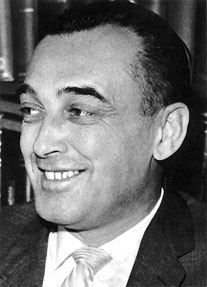
Directed by Busby Berkeley
Screenplay by Sig Herzigm based upon a novel and play by Bertram Millhauser and Beulah Marie Dix
Starring John Garfield, Ann Sheridan, Claude Rains, May Robson, the Dead End Kids (Billy Halop, Bobby Jordan, Leo Gorcey, Huntz Hall, Gabriel Dell, Bernard Punsley).
IMDB Page
Watch the Film on Google Videos
John Garfield never seemed to get the breaks. Which may be why he always seemed to play characters who never seemed to get the breaks. As a young actor, Clifford Odets wrote the play Golden Boy with him in mind for the lead, but the Broadway production starred Luther Adler. He left Broadway for Hollywood, and got an Oscar nomination for his first major role in Four Daughters. So Warner Brothers decided it was time to make him a star, and the result was The Made Me a Criminal.
In it, boxer Johnny Bradford (Garfield) celebrates winning the championship, but in the mayhem, a reporter is killed. Bradford is the prime suspect. His manager steals his watch, car, and girl while Johnny is passed out drunk, and then dies in a car crash. Johnny is officially dead and the case closed, except that he can't access any of his money and can't reveal he's alive. So he bums around the country, ending up at the fig ranch of Goldie West (Ann Sheridan) and her grandmother (May Robson). Goldie also takes care of a group of incorrigible teens (the Dead End Kids), keeping them out of reform school. Bradford (now known as Jack Dorney) goes to work on the farm and turns over a new leaf. But a New York detective, Monty Phelan (Claude Rains) knows that Johnny is not dead, and goes after him in order to prove vindicate his own judgment.
Garfield plays a tough guy, as was often the case in his career. But he always had a softer edge than other movie gangsters; you could sense the toughness was only a shell, and he was not so bad underneath. In the film, he slowly changes, learning that there are more important things in life than being tough, or being thought a "sucker."
The movie also featured the Dead End Kids. You may be familiar with them in a series of comedies where they were billed at "The Bowery Boys."* These comedies were pretty weak programmers, with slapstick and malapropism their mainstays and only brightened by the interplay between Leo Gorcey and Huntz Hall.
However, the original Dead End Kids were far from it. None of them had had any acting experience when they were cast in the play Dead End on Broadway, where they were the original rebellious teens. Dead End was a big hit, and they moved to Hollywood for the film. Warner Brothers knew they had stars, so they featured them in several very successful slice-of-life gangster films before the boys started going elsewhere. They Made Me a Criminal was during the period they were still considered serious actors -- comic relief, of course, but with some depth.
Film buffs may have noted the name of the director. Busby Berkeley is, of course, one of the major names of film, and one of the five big names of film dance.** This was a departure for him, though he moves easily into the genre.***
The film should have made Garfield into a major star, but it didn't seem to happen. He quickly became typecast in similar roles, and often in supporting ones. Garfield also was an independent minded actor with a strong left-wing social conscience, factors that hurt his career, especially in the early 50s when he was blacklisted.**** The stress of the blacklist is also credited to causing the heart attack that killed him in 1952 at age 39.
_______________________________________________
*Or "The East Side Kids" or "The Little Tough Guys." The actors moved from one group to another and back again as they were offered better deals. I remember them best as "The Bowery Boys" due to the fact that those comedies were broadcast every Saturday out of WOR-TV in New York while I was growing up.
**Along with Fred Astaire/Hermes Pan, Gene Kelly, and Bob Fosse.
***One nice touch in the film is Huntz Hall's singing "By a Waterfall," one of Berkeley's most famous dance numbers.
****He wasn't a Communist, but spoke out against McCarthyism and refused to name names.


 Comedy doesn't travel well, either over time and distance. At best you can appreciate the humor, but usually it still doesn't make you laugh out loud. That's one reason why The Wrong Box is such a delight.
Comedy doesn't travel well, either over time and distance. At best you can appreciate the humor, but usually it still doesn't make you laugh out loud. That's one reason why The Wrong Box is such a delight.  (1965)
(1965) 

 The book was Slan. It was an instant classic of the time, the story of the next step in evolution: superhumans with psychic powers. The book was considered one of the major works of the field for 20 years. For years, the slogan "Fans are slans" showed up at science fiction conventions.
The book was Slan. It was an instant classic of the time, the story of the next step in evolution: superhumans with psychic powers. The book was considered one of the major works of the field for 20 years. For years, the slogan "Fans are slans" showed up at science fiction conventions.